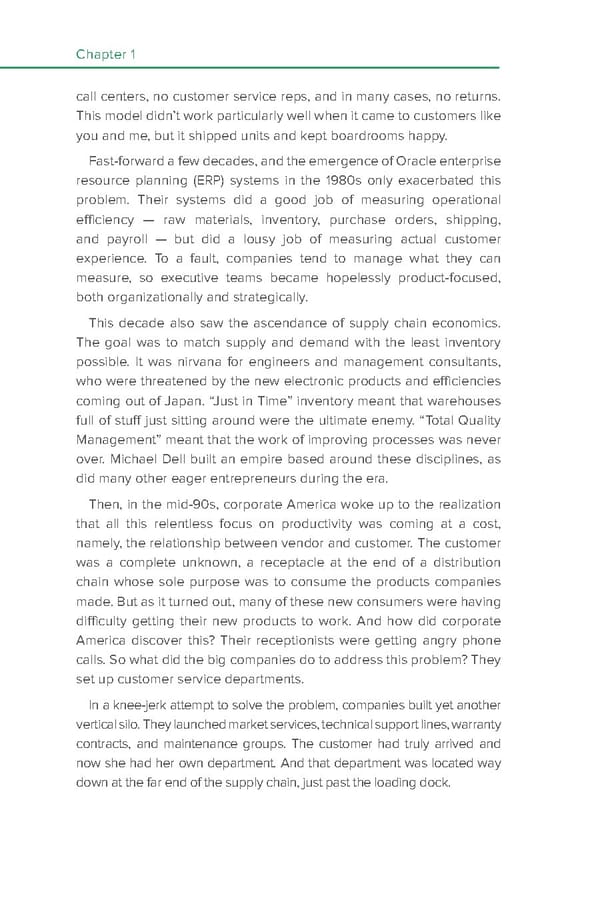Chapter 1 call centers, no customer service reps, and in many cases, no returns. This model didn’t work particularly well when it came to customers like you and me, but it shipped units and kept boardrooms happy. Fast-forward a few decades, and the emergence of Oracle enterprise resource planning (ERP) systems in the 1980s only exacerbated this problem. Their systems did a good job of measuring operational efficiency — raw materials, inventory, purchase orders, shipping, and payroll — but did a lousy job of measuring actual customer experience. To a fault, companies tend to manage what they can measure, so executive teams became hopelessly product-focused, both organizationally and strategically. This decade also saw the ascendance of supply chain economics. The goal was to match supply and demand with the least inventory possible. It was nirvana for engineers and management consultants, who were threatened by the new electronic products and efficiencies coming out of Japan. “Just in Time” inventory meant that warehouses full of stuff just sitting around were the ultimate enemy. “Total Quality Management” meant that the work of improving processes was never over. Michael Dell built an empire based around these disciplines, as did many other eager entrepreneurs during the era. Then, in the mid-90s, corporate America woke up to the realization that all this relentless focus on productivity was coming at a cost, namely, the relationship between vendor and customer. The customer was a complete unknown, a receptacle at the end of a distribution chain whose sole purpose was to consume the products companies made. But as it turned out, many of these new consumers were having difficulty getting their new products to work. And how did corporate America discover this? Their receptionists were getting angry phone calls. So what did the big companies do to address this problem? They set up customer service departments. In a knee-jerk attempt to solve the problem, companies built yet another vertical silo. They launched market services, technical support lines, warranty contracts, and maintenance groups. The customer had truly arrived and now she had her own department. And that department was located way down at the far end of the supply chain, just past the loading dock.
 Subscription Economics Page 3 Page 5
Subscription Economics Page 3 Page 5